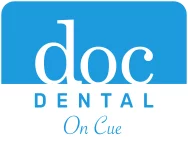What Is Laughing Gas & What’s So Funny About It?

Laughing gas is the common name for an inhaled sedative, used in dental care and in medical care. Laughing gas gets its name from the feeling of well-being and giddiness that it can cause. It also causes a reduction in the sensation of pain, which can be helpful if you are in need of serious dentistry, such as a crown or the removal of a tooth.
The active ingredient in laughing gas is nitrous oxide gas (also known by it’s chemical formula: N2O). Nitrous oxide is colorless and odorless, though some dentists will add pleasant scents like vanilla or fruit to the gas to encourage inhalation, especially in children. Laughing gas is required to include at least 30% oxygen. The most common mix of gases in a dental practice is 30% oxygen and 70% nitrous oxide. Dentists can vary this mix upward if necessary to get the desired sedation effect.
The gas is given to you using a rubber mask that fits over your nose so the dentist can still access your mouth. The gas is inhaled continuously throughout the procedure, and the dentist will ease you onto it and ease you off of it by varying the concentration of nitrous oxide. Most patients report the affects of laughing gas as a feeling of well-being, almost like a “happy drunk”, though nitrous oxide has none of the affects on judgment or coordination that being drunk has. Many patients also report physical sensations, such as a warm or light vibration sensation in the body. Most also feel a reduction in pain sensations, and any pain they might feel they don’t seem to mind. If the dental procedure requires local anesthetic administered by an injection, many patients won’t even notice the needle prick. If you experience nausea or dizziness while on laughing gas, tell the dentist right away or simply remove your mask: this is a sign that the concentration of nitrous oxide is too high for you.
Laughing gas is unique compared to other dental sedation techniques (such as a sedative pill or I.V. medicines) because it starts working very quickly and wears off almost immediately once you stop inhaling it. Most patients feel the effects within 20-30 seconds of inhalation and will become very relaxed within 3-5 minutes. Once the dentist finishes treatment and gradually switches the patient back to oxygen, the effects will wear off within about 5 minutes. That means that unlike other kinds of sedation, there’s no “hangover” period of drowsiness afterward, and most patients can drive themselves home (after being evaluated by the dentist, of course).
Laughing gas lives up to its friendly name as a very safe but also very effective form of sedation. If you or a family member is in need of a dental procedure and are interested in nitrous oxide, please don’t hesitate to ask us about whether it’s right for you.
